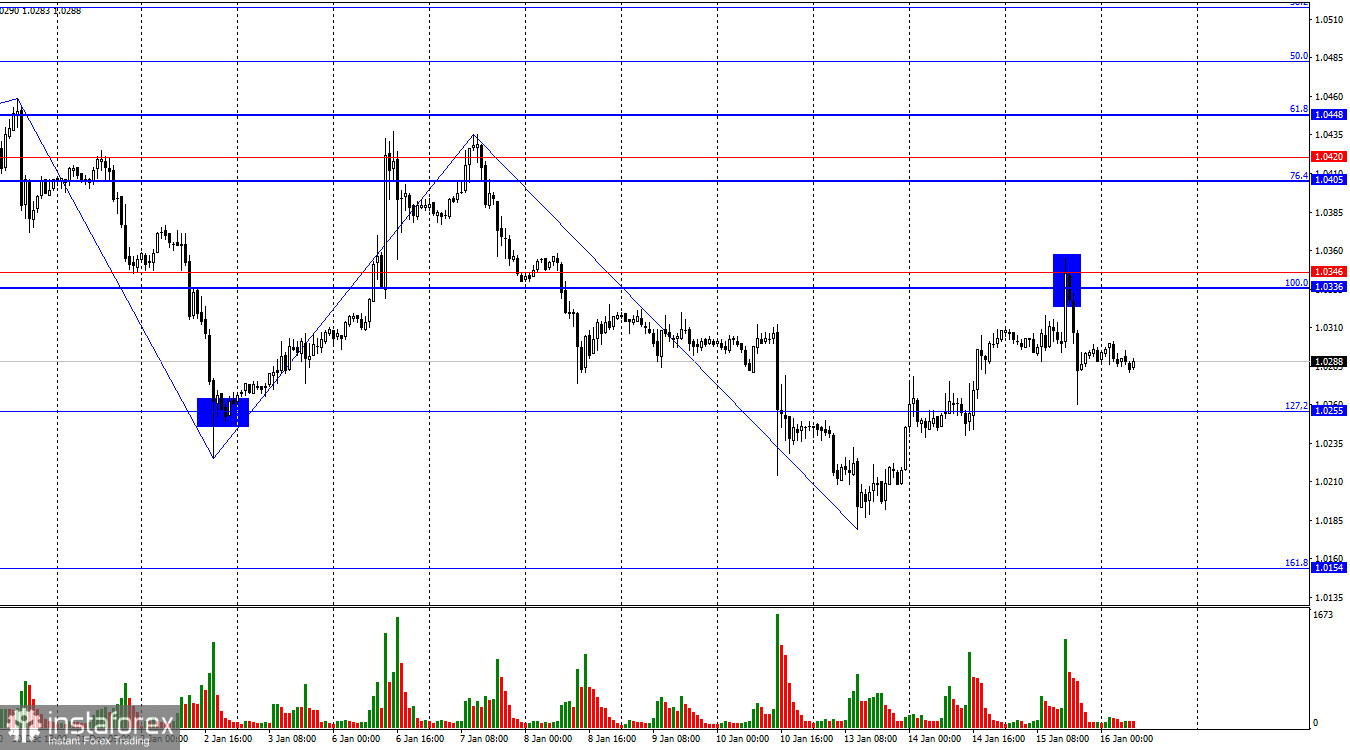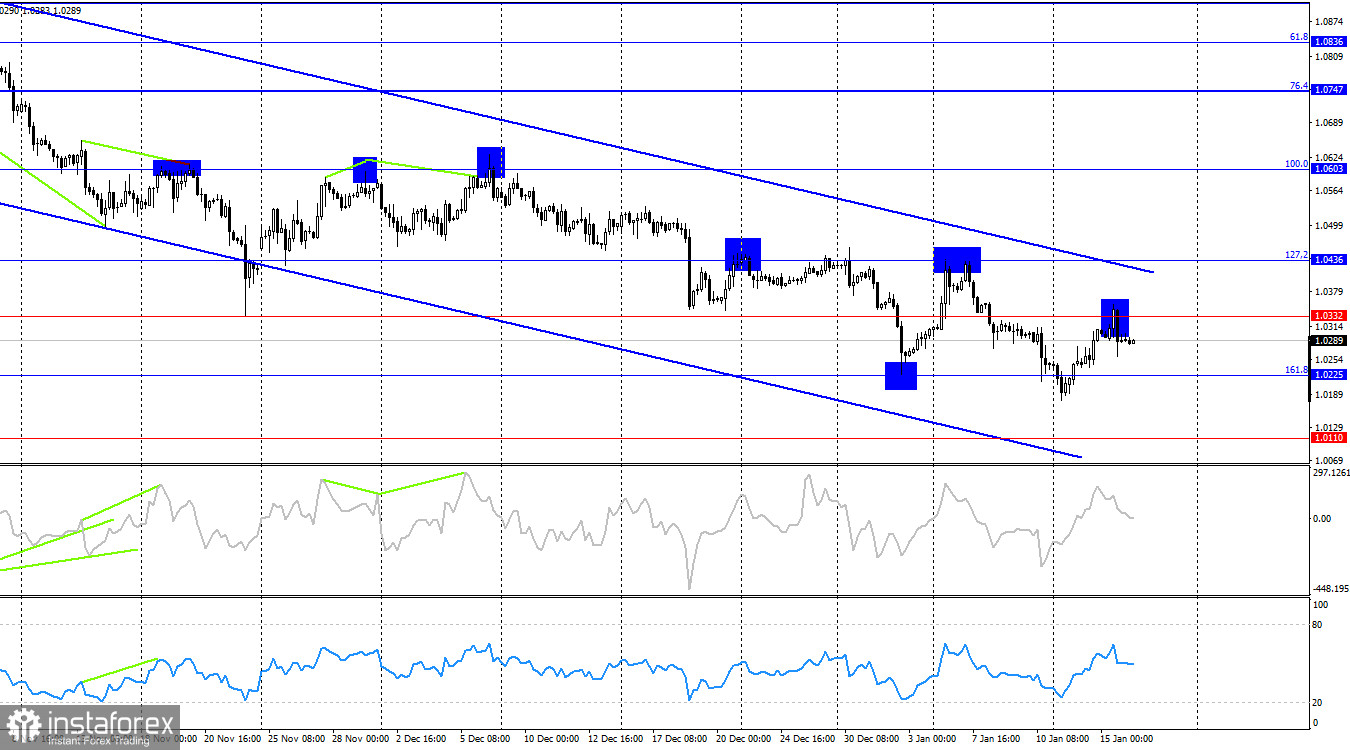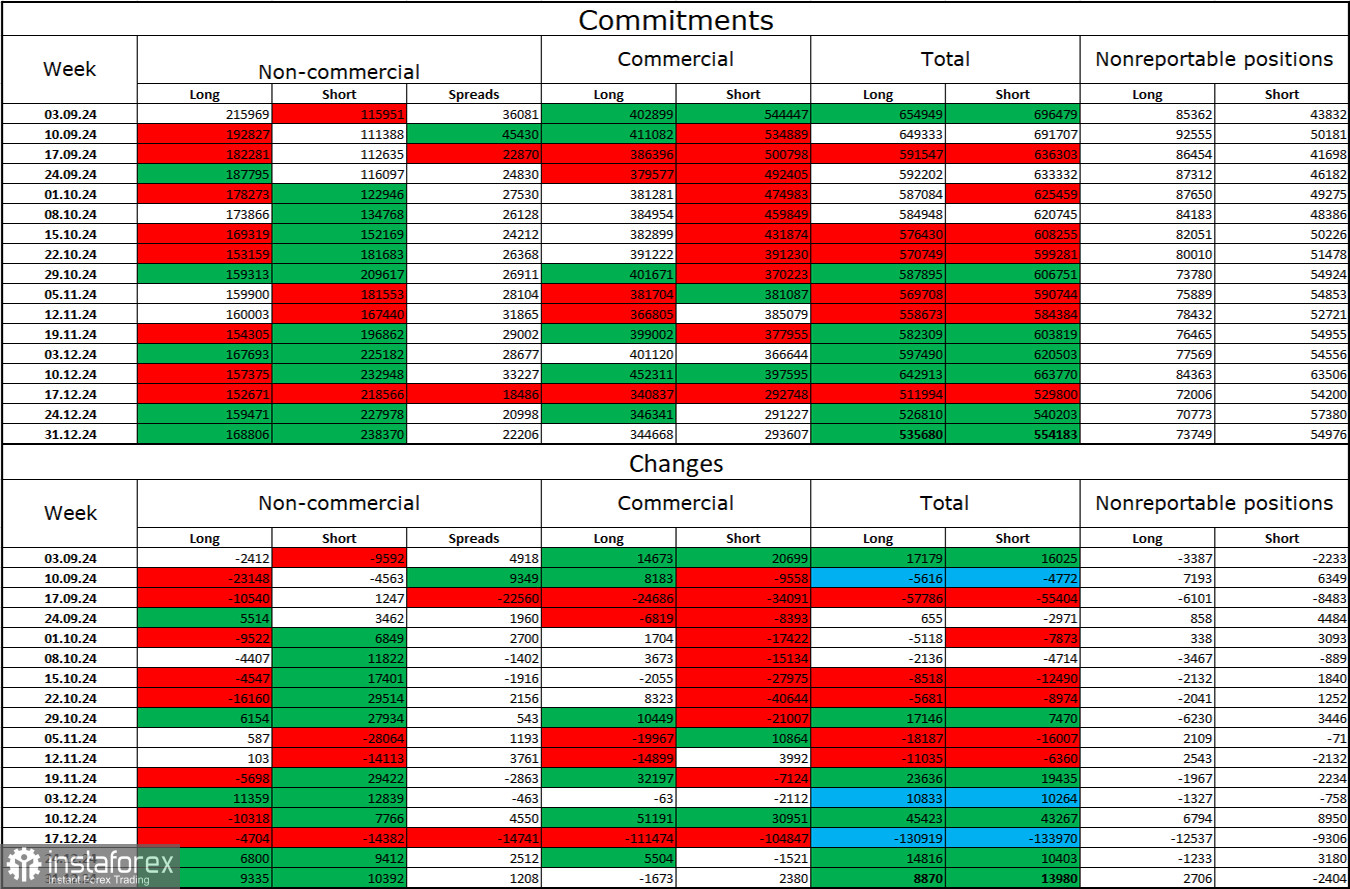
The wave structure remains clear. The last completed upward wave failed to break the previous high, while the new downward wave has twice broken the previous low. This confirms the formation of a bearish trend, with no signs of completion. For a reversal, the euro must confidently rise above 1.0460 and close above it.
On Wednesday, the fundamental backdrop primarily supported the dollar. Traders anticipated US inflation to rise for the third consecutive month. When the Consumer Price Index (CPI) was released, the dollar initially came under pressure but quickly recovered as inflation indeed accelerated to 2.9% year-over-year. However, the market had already priced in this figure, and core inflation unexpectedly dropped by 0.1%, catching traders off guard. Consequently, while the dollar rebounded, it failed to spark a new wave of momentum.
The remainder of the week lacks major reports, so bulls may attempt to push the pair upward gradually. However, they failed to break the 1.0336–1.0346 zone on their first attempt, and a second attempt could also falter without strong fundamental support. I believe the bearish trend remains intact, and further declines should be expected. The dollar holds a stronger position than the euro, with rising US inflation and the upcoming inauguration of Donald Trump delaying the Federal Reserve's next monetary easing to the second half of the year.

On the 4-hour chart, the pair returned to the 1.0332 level and rebounded from it. The pair remains within a downward trend channel, signaling the persistence of bearish market sentiment. This reinforces expectations for a reversal in favor of the dollar and a continuation of the decline toward 1.0110. No emerging divergences are visible on any indicator today. A strong euro rally is unlikely before a breakout above the trend channel.
Commitments of Traders (COT) Report

During the last reporting week, speculators added 9,335 long positions and 10,392 short contracts. The Non-commercial group's sentiment remains bearish and continues to strengthen, signaling further declines for the pair. The total number of long contracts now stands at 168,000, while short contracts amount to 238,000.
For 16 consecutive weeks, major players have been reducing their exposure to the euro. This points to an undeniable bearish trend. While bulls occasionally dominate during specific weeks, these are exceptions rather than the rule. The key driver for dollar weakness—expectations of Federal Reserve monetary easing—has already been priced in. For now, there are no compelling reasons for a significant sell-off in the dollar. While such reasons may emerge in the future, the greenback's continued strength appears more likely. Technical analysis further supports the continuation of the long-term bearish trend, and I expect the EUR/USD pair to continue its extended decline.
Economic Calendar for the Eurozone and the US:
- Eurozone: Germany CPI (07:00 UTC)
- US: Retail Sales Change (13:30 UTC)
- US: Initial Jobless Claims (13:30 UTC)
- US: Philadelphia Manufacturing Index (13:30 UTC)
January 16 features several noteworthy, though not overly critical, economic events. The overall impact of the day's news on market sentiment is expected to be moderate.
EUR/USD Forecast and Trading Tips:
- Sales: Positions could have been opened after a rebound from the 1.0336–1.0346 zone on the hourly chart, targeting 1.0255 and 1.0154. Existing trades can be held with a Stop Loss set at breakeven.
- Purchases: Long positions may be considered on rebounds from 1.0154 and 1.0110, or upon a confirmed close above the 1.0336–1.0346 zone.
Fibonacci Levels:
- Hourly Chart: 1.0336–1.0630
- 4-Hour Chart: 1.0603–1.1214





















